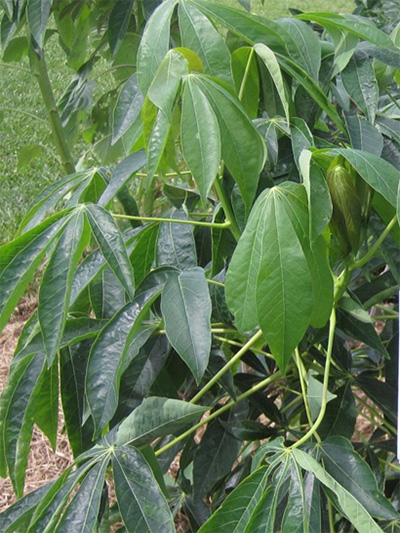 Manihot esculenta (Crantz)
Manihot esculenta (Crantz)
Euphorbiaceae (spurge family)
Location: Sugar, fiber and root crops
Origin: South America (Brazil)
Biophysical Requirements: Adequate moisture and warmth. Can produce on low fertility, acid soils.
Food Uses: The third‐largest source of food carbohydrates in the tropics, it is a tropical root crop with large acreage in Nigeria, Thailand (primarily for export as livestock feed and ethanol production), Brazil and other tropical countries. Cassava roots are the source of tapioca starch, which is used for food, adhesives, and paper coatings. In bitter‐root types, the outer layers of the root contain cyanogenic glucoside, which when ingested can release toxic HCN. In normal food preparation (root cutting or mashing), a cyanogen‐destroying enzyme is released thereby detoxifying the food.


